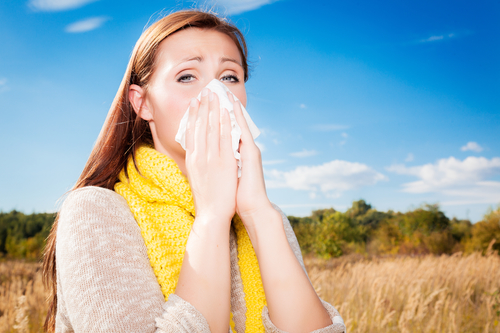Salicylates are everywhere. They are hormones generally generated by plants that save them when they grow, and they are found in beverages, vegetables, fruit, herbs, nuts and so forth. Salicylates can also be manufactured, and aspirin is an example, as is artificial benzoates, food coloring and pain relievers.
Salicylates can also be found in fragrances, skin care products, shampoos, toothpastes, and conditioners. Salicylates are also used as preservations to stop bacteria or fungi and to support better taste.
Because salicylates are so common and found in processed foods, fresh foods, and manufactured items, more and more people are developing sensitivities or intolerances to them. Further, the amount of salicylates in plants, products and herbs can change widely. Some foods have low levels of salicylates, such as pears or cauliflower, and other foods have top levels of salicylates, such as mushrooms and mint. Additional, raw foods and peels of plants contain superior levels of salicylates than plants which are peeled or cooked.

Salicylate allergy symptoms
Salicylate intolerance or sensitivity symptoms are very varied. It is also hard to diagnose salicylate issues because there is no allergy test to determine whether or not salicylates are your issue, anyway, the following salicylate allergy symptoms generally appear when a person has salicylate intolerance or salicylate sensitivity.
Dermis – eczema, dermatitis, rashes and itching
Central nervous system – inability to concentrate, hyperactivity, headaches, depression, mental sluggishness, migraines, and mood changes.
Muscokeletal system – weakness, myalgia, arthritis, and achy joints
Respiratory system – sinusitis, rhinitis and asthma
Gastrointestinal – colic, canker sores, bloating, diarrhea, colic, cramps, heartburn, flatulence, vomiting, stomach pains, mouth uncles
Other symptoms =- hives, tics, tinnitus, ear infections, and swelling in hands, feet or face.
What is difference between intolerance and sensitivity?
When you are sensitive to salicylates your body works as if it were experiencing an allergen, and you get a quick reaction after eating a food. When you suffer from an intolerance, the issue is not a immune response, it is dose related. What that means is that your body can handle a different amount of salicylates, but at some point it becomes toxic. So, for example, you might be capable to eat half an apple, but if the full apple, you have a reaction, and the reaction may not happen for 3 days and then it might last 2 weeks.
Intolerance can also become chronic issues. For example, a person is exposed day after day to salicylates could develop one of the salicylate allergy symptoms described above and then other issues could outcome.
The reason why is if you are constantly eating an offending food, you are in a sense poisoning yourself, and so over time symptoms change or rise. So, for example, instead of just having achy knee joints you might start to experience swelling or knee inflammation.
How do I know I am sensitive?
If you have been experiencing any of the above issues and are unable to describe the cause, an elimination diet can support you determine if salicylates are to blame.
With an elimination diet, your eliminate products and foods that have salicylates, then keep track of your signs. If your signs gone, there is a best chance that you are sensitive to salicylates.
If you think you are sensitive, this does not explain that you can never eat a food that contains the compounds. Bear in mind that some foods may affect you more than others, so you may need to experiment. Other reasons also include to the difficulty, making different foods and food parts less potentially tricky than others:
- The superior levels of salicylates are establish just under the skin of different vegetables and fruits, and in the outer leaves of vegetables.
- Dry foods, raw foods and juices may have more salicylates than cooked food.
- Salicylate levels reduce the riper a food gets.
In other words, if you are salicylates sensitive in a certain food, you may find you can tolerate if it is extremely peeled, ripe and cooked.
Food that have no salicylate content are limited
There are numerous different kinds of food which contain important amount of salicylates and they need to be rejected by those who experience salicylate intolerance. This contains a big number of fruits and nuts such as grapes, raisins, tomatoes, gooseberries, cucumbers, plumps, plums, blueberries, cherries, raspberries, fresh pineapple, currants, strawberries, peppers nectarines, apples, oranges, eggplant, apricots, peaches, radishes, blackberries and almonds.
Various kinds of food which have different types of fake colors and artificial flavors generally contain important salicylates amount and need to be rejected fully by those who suffer from salicylate intolerance. Other kinds of food which also require to be rejected as much as possible contain hot dogs, Aloe Vera, clover honey, lunch meat, oil of wintergreen, molasses, candies, chewing gums, rosemary, Chinese five spice, cloves, curry, ginger, paprika, peanut, butters, various different kinds of bakery items, numerous different sorts of wine vinegar, dietary supplements, cider vinegar, balsamic vinegar, and margarine. There are also certain kinds of beverages that need to be rejected for quite some time and those contain diet drinks, coffee, all sorts of wine, tea, soda, beer and all types of distilled drinks.

